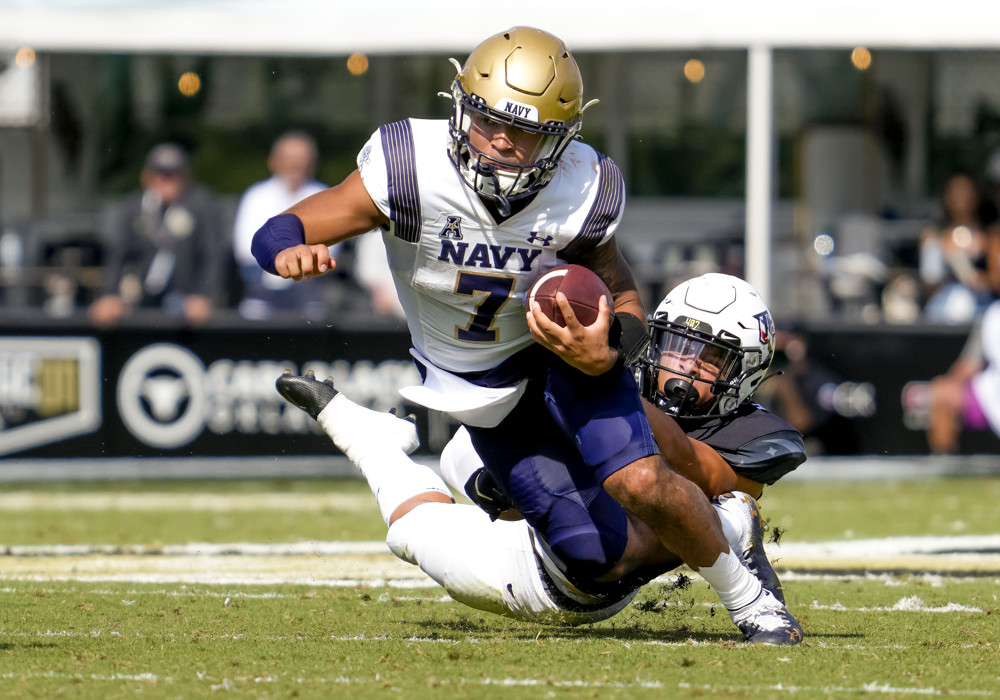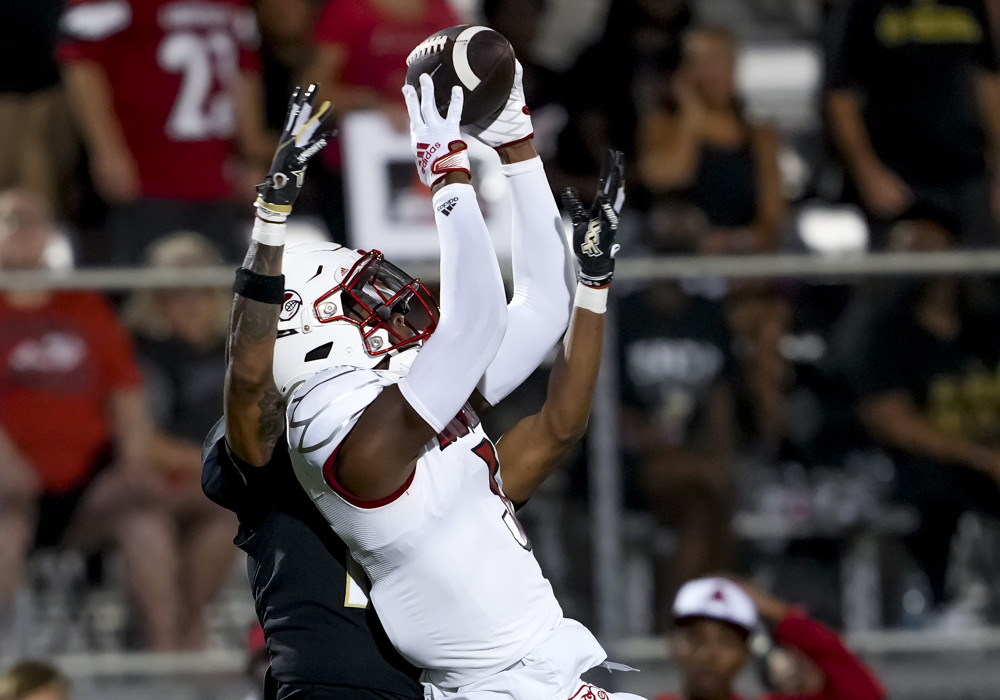In his seven years in Ames, Matt Campbell has turned Iowa State from a cellar dweller into a consistent bowl contender. While the offense has improved by over 6 points per game in his tenure, the Cyclone defense, headed by Jon Heacock, has led the turnaround, improving by over 12 points per game from 2015-2021.
Heacock’s 3-3-5 has flummoxed his opponents, stifling their ability to pass, even as Iowa State resides in the foremost passing conference in the country. The run defense does even better, ranking in the top five in Points Saved Per Play the past two seasons.
Looking at the Cyclone defense, it comes as no surprise that it excels in the passing game. With three deep safeties and an extra linebacker helping out of the box, the Cyclones outnumber the receivers they cover and can mix in and disguise a variety of coverages from their base look.
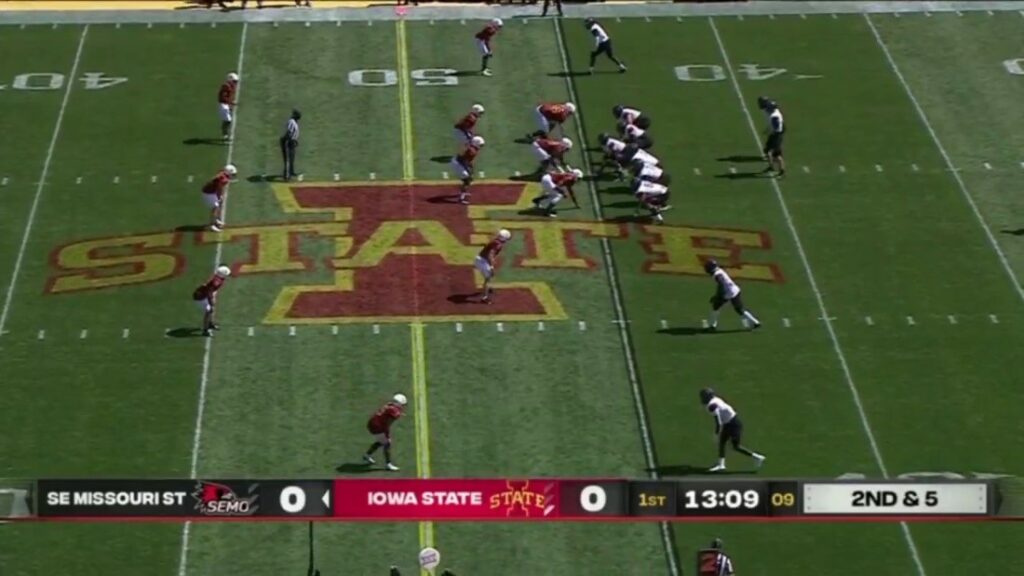
But the extra defenders in the passing game would appear to detract from the run game. To stop the run, most defenses either place a man in every gap, such as Gary Patterson’s 4-2-5:
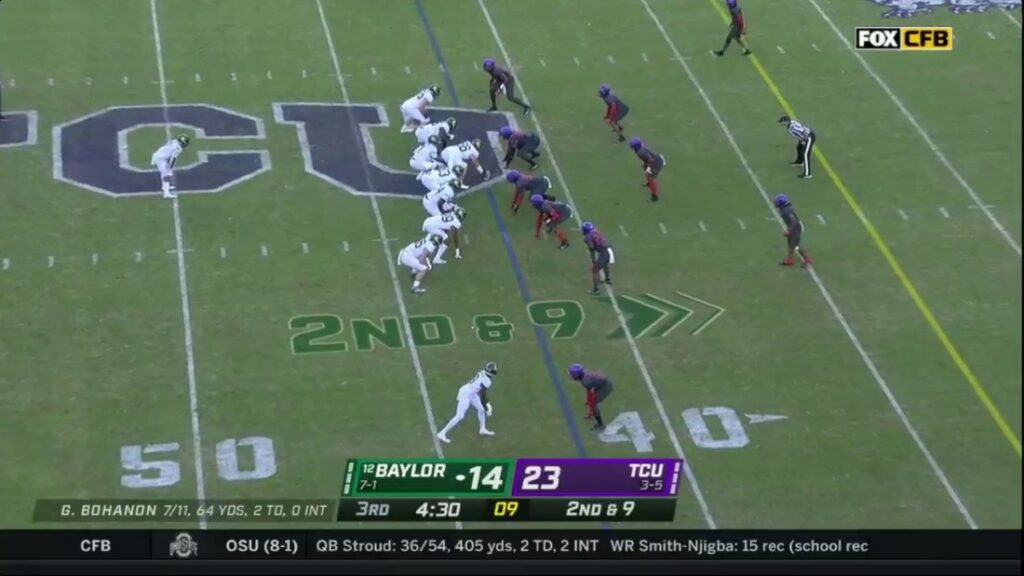
Or to have each box defender cover two gaps with overlapping responsibilities between each of them, such as Kalani Sitake’s 3-4:
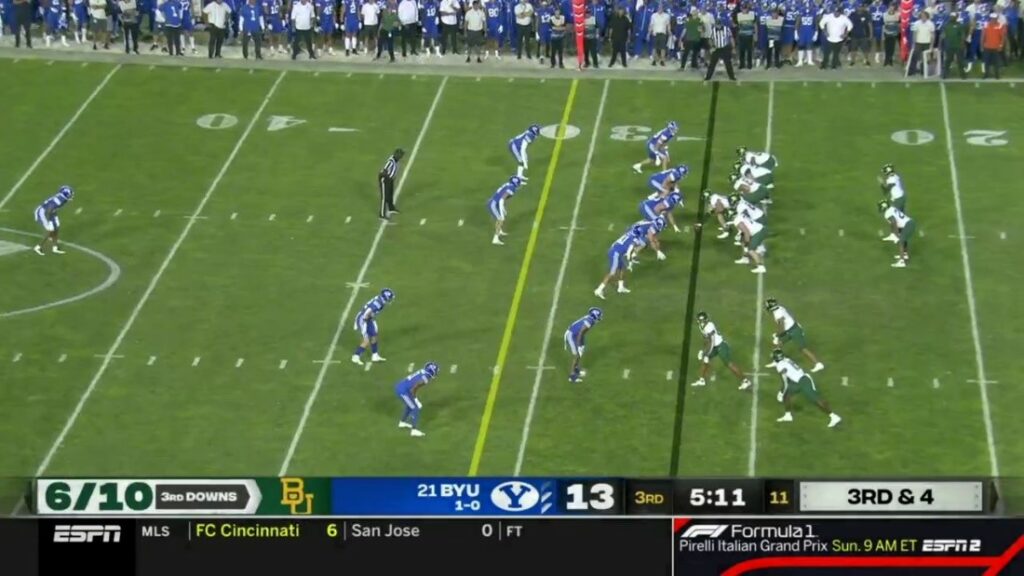
Even most 3-3-5’s, such as Tony Gibson’s, match the offense player-for-player:
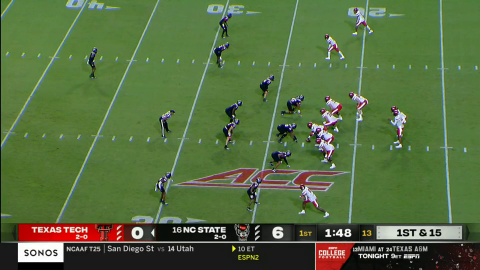
But not Jon Heacock’s. Since 2018 Iowa State has defended the run with only five in the box 814 times, over 350 more than second-place BYU. The Cyclones play with what looks like too few between the tackles against all sorts of offensive packages, be it 11 personnel:
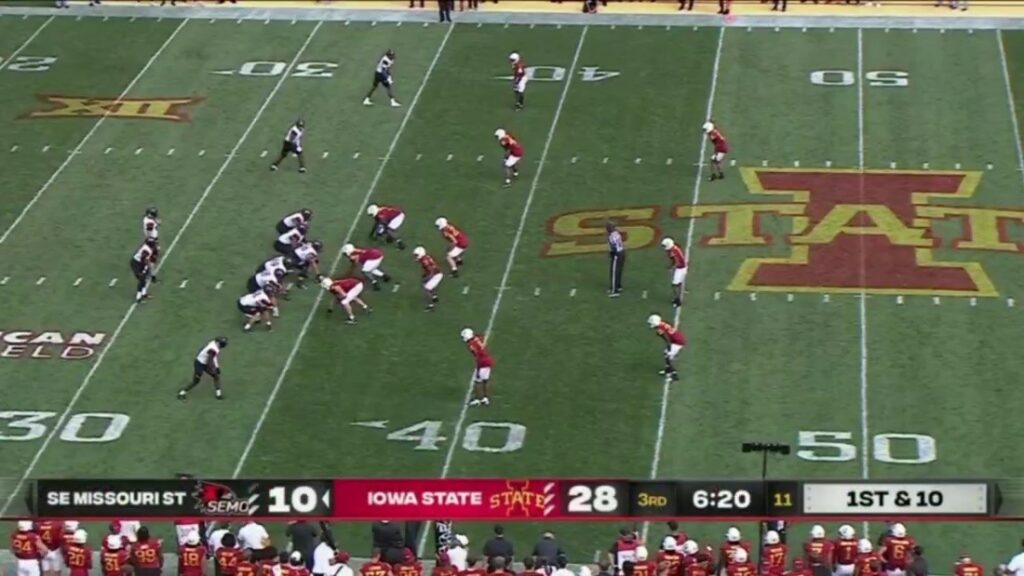
12 personnel:
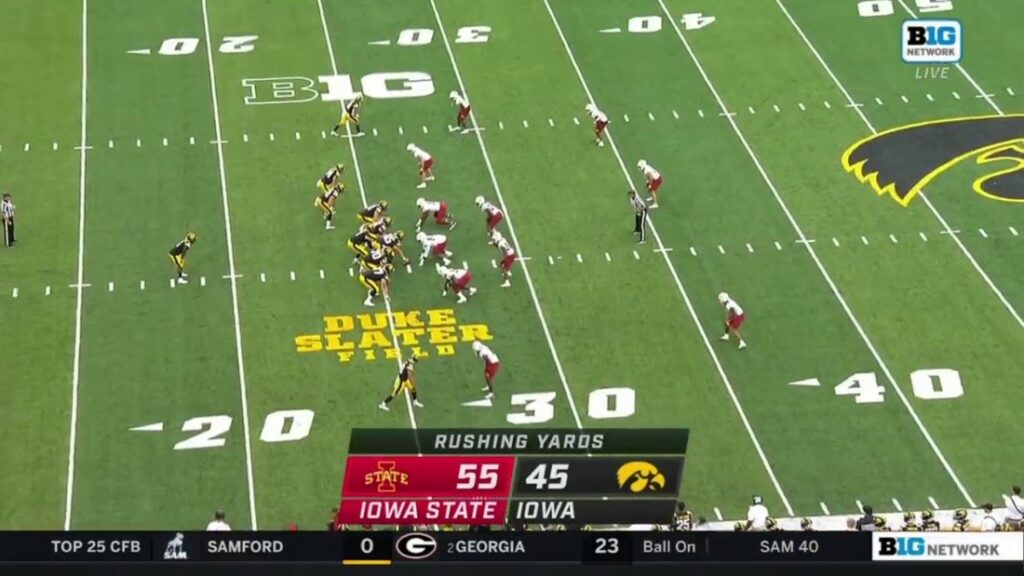
20 personnel:
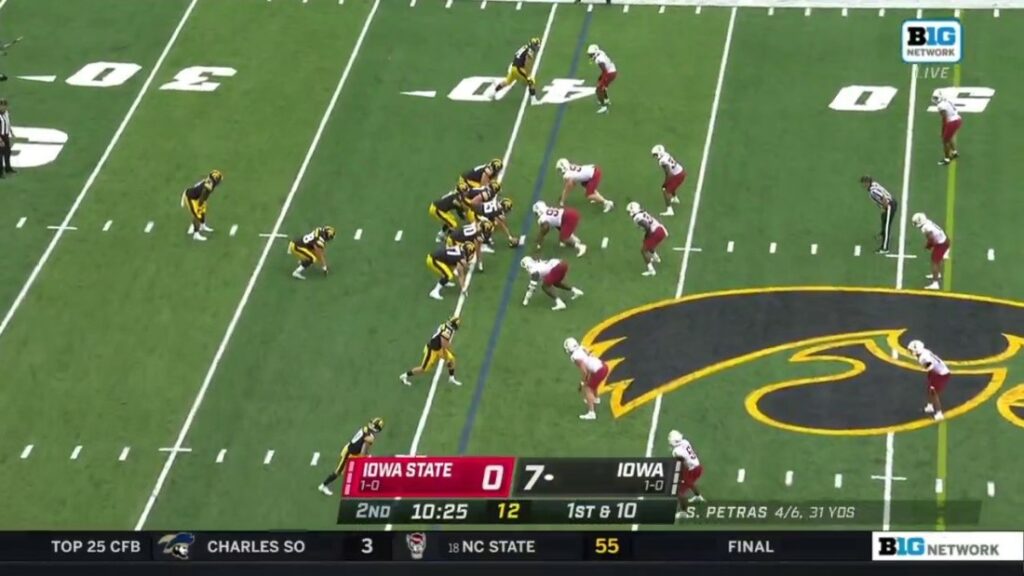
Or 21 personnel:
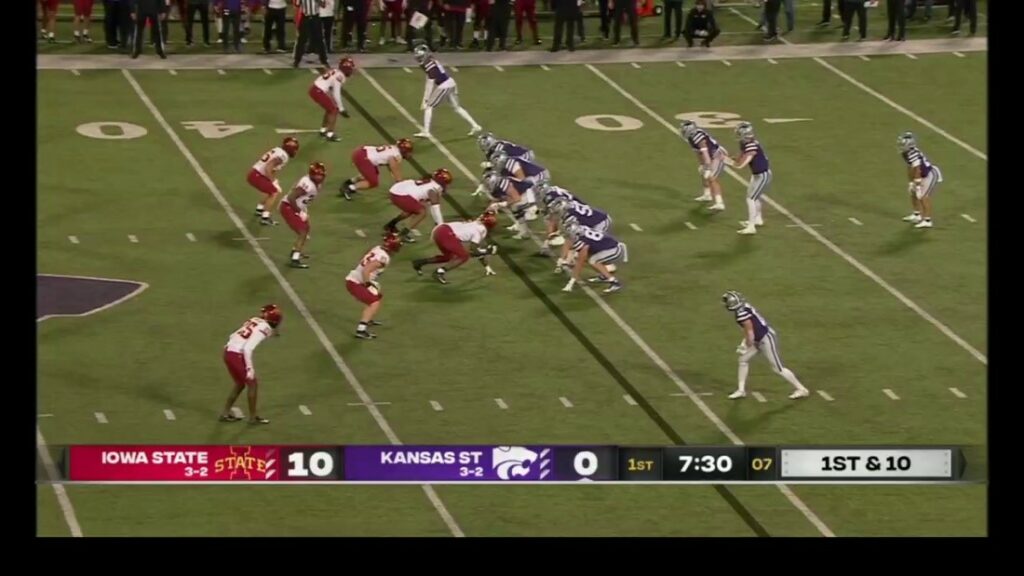
This unorthodox approach clashes with 150 years of football philosophy and intuition. Has Heacock proven the conventional wisdom wrong and found a superior scheme?
That seems unlikely. Many schemes come along that take the world by storm only to be solved in due time. The Miami 4-3 stopped the Nebraska option in its tracks, spread offenses came along to mismatch fast skill players against slow linebackers, and defenses such as Heacock’s responded by matching the extra speed with an extra defensive back. Just as Heacock’s scheme has come, an offense will appear to have it figured out by exploiting weaknesses that were present all along.
With three deep safeties leaving wide alleys of space unoccupied, intuitively the outside run could be the Cyclones weakness. But in 2021 Iowa State ranked 7th in both Points Saved per play and 13th in Points Above Average per play, registering .56 and .15 respectively. In fact, the Cyclones defend the outside run so well because of their three deep safeties.
Each safety begins 9-11 yards away from the line of scrimmage, more than a typical overhang but less than a normal deep safety. Having three players at this depth allows them to attack the line of scrimmage more quickly than normal safeties. Each one can also attack the run more aggressively knowing there are two others behind him who can cover his mistakes. On this run the safety becomes another box defender by attacking the line of scrimmage on the snap, preventing the third down conversion:
Against this trips look, the safeties close the space being only nine yards from the line of scrimmage and can snuff out the outside run before it breaks loose:
As mentioned earlier, the Cyclones disguise many of their looks as well, and use such disguises to get more run defenders through blitzes:
Or simply allowing other players such as the cornerback to play the run while the safety takes the cornerback’s half of the field:
The Cyclones can overcome their box deficit against the outside run, but not against the inside run. On inside runs last season, excepting quarterback sneaks and kneels, the Cyclones ranked 52nd and 55th in Points Saved per play and Points Above Average per play, at .49 and .06 respectively. They allowed .01 EPA per inside run, 87th in the FBS.
Split zone gutted the Iowa State front, averaging 5.3 yards per carry. West Virginia ran it 11 times for 64 yards in its upset victory over the Cyclones last October, such as by sliding through an inside gap:
Or running off tackle as the offensive line walls off the defense:
Other teams took notice too, as the Cyclones saw split zone 14 more times in their final six regular season games than their first six. Clemson ran it 8 times in their bowl game, and Iowa ran it 12 times in this year’s matchup despite not running it once in their 2021 game.
Despite the failings of the Iowa State interior, few teams have exploited it, mostly due to their own schemes. Most of the Big 12 looks pass first, run second. They cannot switch their scheme for one game a year. Each team will make some adjustments, such as repping split zone more during the week and testing formations to get Iowa State’s defense out of position. But each team does better playing to its strengths than playing only to an opponent’s weaknesses.
Matt Campbell and Jon Heacock know this. They also know that every defense will have flaws, no matter how talented or well coached. Campbell and Heacock chose a defense whose weaknesses could not be exploited by their opposition, while its strengths would match their opposition’s. By thinking in terms of tradeoffs instead of solutions, Campbell and Heacock have brought Iowa State to consistent relevance in the Big 12.

